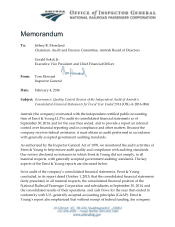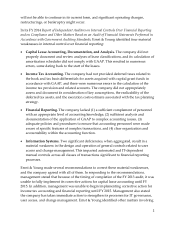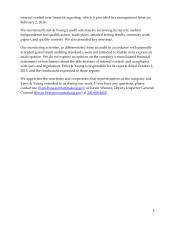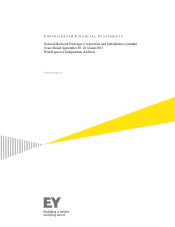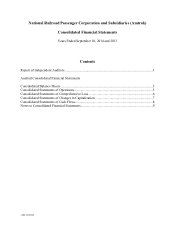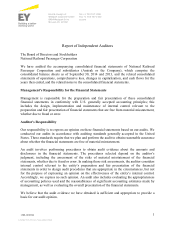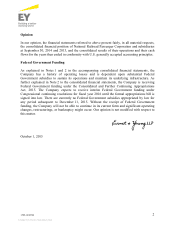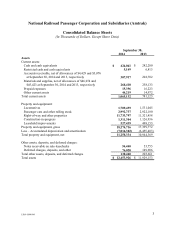Amtrak 2014 Annual Report Download - page 3
Download and view the complete annual report
Please find page 3 of the 2014 Amtrak annual report below. You can navigate through the pages in the report by either clicking on the pages listed below, or by using the keyword search tool below to find specific information within the annual report.2
will not be able to continue in its current form, and significant operating changes,
restructurings, or bankruptcy might occur.
In its FY 2014 Report of Independent Auditors on Internal Controls Over Financial Reporting
and on Compliance and Other Matters Based on an Audit of Financial Statements Performed in
Accordance with Government Auditing Standards, Ernst & Young identified four material
weaknesses in internal control over financial reporting:
Capital Lease Accounting, Documentation, and Analysis. The company did not
properly document and review analyses of lease classifications, and its calculation of
amortization schedules did not comply with GAAP. This resulted in numerous
errors, some dating back to the start of the leases.
Income Tax Accounting. The company had not provided deferred taxes related to
the book and tax basis differentials for assets acquired with capital grant funds in
accordance with GAAP, and there were numerous errors in the calculation of the
income tax provision and related accounts. The company did not appropriately
assess and document its consideration of key assumptions, the realizability of the
deferred tax assets, and the execution costs estimate associated with the tax planning
strategy.
Financial Reporting. The company lacked (1) a sufficient complement of personnel
with an appropriate level of accounting knowledge, (2) sufficient analysis and
documentation of the application of GAAP to complex accounting issues, (3)
adequate policies and procedures to ensure that accounting personnel were made
aware of specific features of complex transactions, and (4) clear organization and
accountability within the accounting function.
Information Systems. Two significant deficiencies, when aggregated, result in a
material weakness in the design and operation of general controls related to user
access and change management. This impacted automated and IT-dependent
manual controls across all classes of transactions significant to financial reporting
processes.
Ernst & Young made several recommendations to correct these material weaknesses,
and the company agreed with all of them. In responding to the recommendations,
management stated that because of the timing of completion of the FY 2013 audit, it was
unable to fully implement its corrective actions for capital lease accounting until FY
2015. In addition, management was unable to begin implementing corrective action for
income tax accounting and financial reporting until FY 2015. Management also stated
the company has taken immediate action to strengthen its processes for IT governance,
user access, and change management. Ernst & Young identified other matters involving


